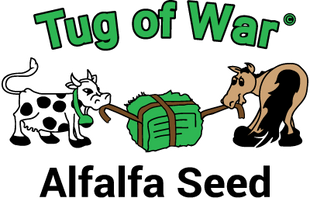Description
Get Meadow Brome for $3.54 per pound!
Extrem Shortage!!
Meadow Brome is one of the best cool-season grasses that is great for hay, pasture, silage, and green chop. This high quality, high yielding forage can work well as a companion to alfalfa as well. Meadow Brome is best adapted to cooler climates and is generally hardier than Tall Fescue or orchardgrass. It is resistant to drought and extremes in temperature.
Planting Depth : .50”
Planting Rates: 25-35 lbs per acre. 10-20 lbs per acre in mixes
Planting Dates: Aug - Sep. Fall planting should take place at least 6 weeks before a killing frost. Mar - May in northern states to allow for proper germ
*Product ships in 50 pound bag
Establishment
Brome grasses have larger seed size than other grasses so attention to drill calibration is important. The growth patterns of Brome grasses, in general, do well when planted as a companion with alfalfa. A clean firm seedbed is needed. Due to the slow germination and establishment of Meadow Brome, spring seedings are especially preferred in the northern states. In southern areas, late summer seedings are a second option. On dryland sites under normal precipitation patterns, do not plant later than May 15 or a failure may occur because of drought and hot summer conditions before the grass is well established.
Adaptation
Meadow brome is most commonly used in the northern tier of the United States and the southern tier of Canada but can grow on plains, mountain valleys, mountain brush, aspen, conifer forest and subalpine sites at elevations of about 4,000 feet. It has excellent winter hardiness with moderate tolerance to shade. However, it is less winter hardy than smooth brome and crested wheatgrass. It performs best on moderately deep to deep, fertile, well-drained soils but also performs fairly well on shallower soils. Preferred soil textures range from coarse gravelly to medium textured. Meadow brome can be grown under dryland conditions receiving greater than 14 inches of annual precipitation, but performs best with 16 inches or more of annual precipitation or with irrigation. Meadow brome is rated poor to moderate for salinity tolerance depending on testing procedures. It is sensitive to flooding and commonly dies if inundated for more than 10 days. Meadow brome tends to be less aggressive than Smooth Brome.
Management
Under dryland conditions new planting should not be grazed until late summer or fall of the second growing season. The plants may be severely damaged or pulled out by overgrazing especially in the seedling year due to poorly rooted seedlings. Under irrigated conditions the new planting should not be grazed until late summer or fall of the first growing season. Harvesting for hay during the planting year is most beneficial to eliminate grazing damage. Brome responds well to rotational grazing. To maintain longevity, the grass should be allowed to periodically head and produce seed for continuation of the stand. It is not considered weedy but could spread into adjoining degraded plant communities via seed under ideal conditions.
Description
Meadow Brome, is a leafy, sod-forming, perennial, cool season grass. The stems vary in height from 2 to 4 feet. The plant produces numerous basal and stem leaves that vary in length from 4 to 10 inches. Frequently, the leaves are marked by a transverse wrinkle resembling a “W” a short distance below the tip. The flower head develops a characteristic rich purplish-brown color when mature. The seed is produced in semi-compact 5 inch long panicles with ascending branches. The flat compressed seed is usually awnless, about 1/3 inches long, and smooth. There are approximately 135,000 seeds/ pound.
Shipping
Payment & Security
Your payment information is processed securely. We do not store credit card details nor have access to your credit card information.


